Beautiful and Repulsive Butterflies: An Interview with M. Stern
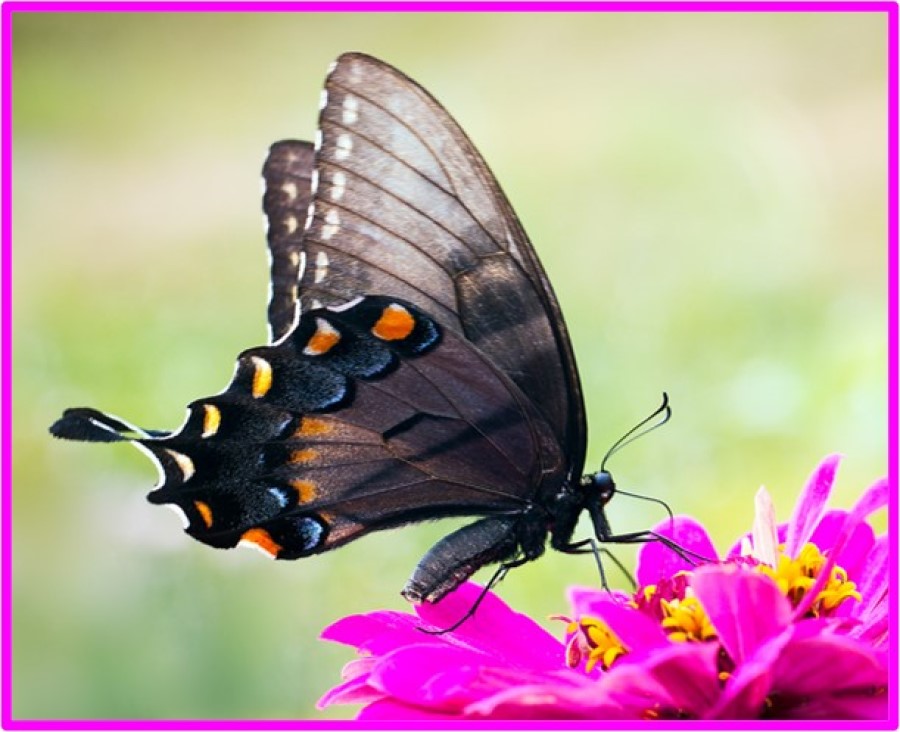
We have an ongoing series on Black Gate discussing “Beauty in Weird Fiction.” We corner authors to tap their minds about their muses and ways to make ‘repulsive’ things ‘attractive to readers.’ Recent guests on Black Gate have included Darrell Schweitzer, Anna Smith Spark, & Carol Berg, Stephen Leigh, Jason Ray Carney, and John C. Hocking. See the full list of interviews at the end of this post. This one covers emerging author M. Stern who writes weird/horror fiction and sci-fi. He has had stories appear in Weird Book #44, Startling Stories#34, and Doug Draa’s clown anthology Funny As a Heart Attack. There’s some strange and complicated beauty to be found in all of those. He also has published in several other markets including Lovecraftiana: The Magazine of Eldritch Horror and flash fiction that deals with aesthetics and transgression in Cosmic Horror Monthly #19.
SE: How do you define Beauty that appears to be repulsive (weird/ horrific)?
MS: Beauty in general is one of those concepts that gets harder to define the more you think about it. Of course, this is why there’s a whole wing of philosophy that has dealt with this type of thing for 2,500 years or so, on and off. But just thinking about it in my own personal experience without invoking an overarching theory of aesthetics, I find myself sometimes asking – why does a particular face or personality or characteristic strike me as immediately beautiful when another one doesn’t? How can someone be completely unremarkable when I enter a room but be beautiful when I leave it? And what does the way I experience beauty in the real world have to do with the beauty I recognize or appreciate on the page, in film, music, photography, painting or elsewhere?
Despite all the navel-gazing I’ve done throughout the pandemic I don’t know that I have clear answers, but who does? I guess you could say I believe beauty is one of the most important things in life, even though I can’t really explain what it is. I think a number of my favorite authors – inside and outside of genre fiction — have ascribed this type of mystical quality to beauty in their way.
Vladimir Nabokov used to say that he believed the beauty of butterflies to be proof of the existence of God, because their variation in color pattern served no evolutionary purpose and thus illustrated a metaphysical plan of some sort – that it was an example of nature furnishing us with things meant solely to satisfy our sense of aesthetics.
It just occurred to me though that if you really get face-to-face with a butterfly, down looking at the non-wing part which is the most important part from the butterfly’s perspective, it’s sort of revolting.
It seems like under the right circumstances if you put a butterfly on a little kid, the kid would probably scream. In fact from what I understand there is a class of antimalarial medications that people sometimes take that make them see human-sized butterflies and the first instinct upon seeing one is to jump out the window to get away from it. I think that says something, though I am not exactly sure what. But it does get us to the question of the relationship between beauty and repulsion, horror, disgust, weirdness, etc. in fiction and defining it, which is an even more difficult thing to do than just defining beauty as, I suppose, whatever is intuitive about beauty is less immediately obvious in its disgusting iterations.
M. Stern’s Partial List of Weird Beauty
This seems like a perfect time to implicate my wife and share some of her butterfly photographs, including the feature image. Beyond butterflies, can you categorize “Weird Beauty” in art & storytelling?
Running down a quick and not-at-all exhaustive list of types of beauty that come to mind when I think of beauty in horror/horrific art might help me define it. But I’m just riffing. Some of these categories probably overlap, and I don’t mean this to be a restrictive, be-all, end-all list. People can get too crazy with categorization sometimes. Anyway, we’ve got:
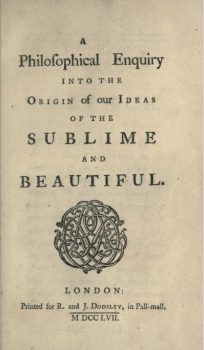 A) OPPRESSIVE GRANDEUR: Grotesque, repulsive, or otherwise intense images so superlative in doing what they do… that they overwhelm us in a way that hits the same mental and emotional notes as beauty.
A) OPPRESSIVE GRANDEUR: Grotesque, repulsive, or otherwise intense images so superlative in doing what they do… that they overwhelm us in a way that hits the same mental and emotional notes as beauty.
Something like a repulsive or horrifying version of “grandeur.” I think of this as being most in line with the “Burkean Sublime,” though I know I have sometimes used this term to refer to other types of repulsive, visceral beauty (there are some other adjacent philosophical concepts this one might relate to as well).
For the reader… Edmund Burke is the author of the 1757 A Philosophical Enquiry into the Origin of Our Ideas of the Sublime and Beautiful. My interpretation is that Burke proposed that scary things that are clearly out of our control, like severe weather or earthquakes, offer vivid perspectives that can feel strangely good: daily minutia and grievances pale in the comparison of large-grandeur events.
For sure – and we see this one in some of the earliest modern weird/horror fiction, some of the stuff that influenced Lovecraft. William Hope Hodgson’s House on the Borderland is page after page of it; dead suns and ominous dark landscapes lit by green stars and all types of other descriptions of things destabilizing and inconceivable.
B) DISSONANT IMAGERY: Images that stage or orchestrate repulsive or violent acts with a degree of artistically intentional stylization… that we would normally see applied in works that are traditionally beautiful.
I think of this as being the kind of beauty you find in the most auteur-driven of the classic Italian gore films – expressionistic blood splatters (for instance various blood sprays on white backgrounds in Dario Argento’s Tenebre, or at the beginning of Joe D’Amato’s somewhat vile classic Anthropophagus when we follow the film’s star cannibal walking up the beach by the drops of blood dripping off him into the sand), stylized eye gouges (the most notorious being in Lucio Fulci’s Zombi) and so on. In horror literature, the ending of Clive Barker’s short story “The Skins of the Fathers,” which appeared in the second volume of Books of Blood, jumps out at me as an example:
The men whose faces were buried but whose limbs, or parts of bodies, still broke surface, were dead of asphyxiation by now. Only Eleanor Kooker, Davidson and two other men survived. One was locked in the earth up to his chin. Eleanor was buried so that her breasts sat on the ground, her arms were free to beat uselessly at the ground that held her fast. Davidson himself was held from his hips down. And most horribly, one pathetic victim was seen only by his nose and mouth. His head was tipped back into the ground, blinded by rock. Still he breathed, still he screamed.
Eleanor Kooker was scrabbling at the ground with torn nails, but this was not loose sand. It was immovable.
— Clive Barker
This scene strikes me as having a very painterly, stylized feel to it. I also wonder if it owes something to a scene in Pier Paolo Pasolini’s classic film Teorema, in which a character buries herself up to her eyeballs and we see her tears pooling in the mud.
This brings to mind the controversial 1971 film A Clockwork Orange (link to 1975 trailer). Stanley Kubrick meshed operatic symphonies with some wildly violent/weird scenes (based off the black comedy novel by Anthony Burgess). Many considered such depictions to be a “glorification of violence” or “condoning of evilness” rather than a statement about violence/evil (or whatever). The movie craft is well done, cinematography well-composed, etc.…but the content deplorable and hard for many to watch.
To your point here Seth, I definitely agree about Clockwork demonstrating this type of beauty – certainly, Kubrick was as style-conscious a director as ever there was and it is on full display in Clockwork – and I think the stylization probably does play a role in the controversy surrounding it as you mentioned, though the film also opens up a different can of worms I think, with respect to realistic violence and what a mainstream audience vs. a genre/transgressive cinema audience is willing to tolerate. But I think another element worth thinking about here is something I saw Paul Schrader mention in an interview in which he discussed Robert Bresson’s The Pickpocket and its impact on the screenplay of Taxi Driver. He pointed out that an audience begins to identify with the main character of a movie after a certain point, no matter what the character is doing. And so I think with Clockwork, a certain kind of viewer – perhaps the viewer looking for a straightforward morality play – feels uncomfortably implicated. Because they’re along for the ride watching the “cool kids” in the cool costumes speaking in the weird cryptic pidgin-Russian slang beat the tar out of people with canes and so on. Which is perhaps one big point of the movie. I think someone like Slavoj Zizek would probably have more insight on the aesthetics of violence and so on in this respect.
This is a dangerous strategy to pursue as an artist, since (although evocative) it confuses glorification vs. depiction of intense action
I don’t know if I personally would call it dangerous exactly, in that I think it really depends on what an artist is going for, though I agree that it can alienate particular audiences or draw criticism. What we mean by “glorification” is also an interesting thing to look at here – I think an argument could be made that the “okay” violence of action movies does more in the way of glorifying it than something like Clockwork does, though I might be getting too far afield of discussing beauty here. The irony of Clockwork, I think, is that it actually has a moral center, though the film doesn’t get to it as clearly as the book. Not that I believe entertainment needs to have a moral center, but in this case there is one to be found there. When I watched it, then read it, in high school, I didn’t understand the big hubub about the exclusion of the 21st chapter from the film; the chapter in which Alex as an adult encounters the old gang and they’re all sort of banal. You reach a certain age, though, and you realize that life really is sometimes like that. You remember a kid who used to get into all sorts of crazy stuff and you look him up and the guy is now an insurance salesman with six kids. Not because he was subjected to some effective program of social correction, but because selling insurance is what old people do.
By making the brutality more “beautiful” it seems to many as less acceptable (i.e. vs the “okay” violence in superhero or action movies).
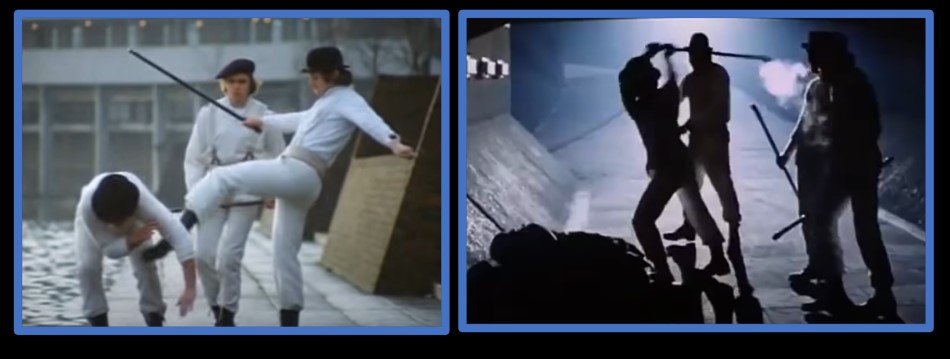
C) LINGUISTIC ART: Descriptions of horrible things that are particularly evocative through being lyrical and skillfully use language to evoke disgust, or are beautiful on the sentence level even though they describe things that are disgusting or disturbing.
Patrick Sueskind’s Das Parfum, which I read in the original German, is a more recent example I’ve read of this. For Das Parfum, it’s hard for me to pick out one particular example because the first couple of pages demonstrate this kind of beauty and I can’t really pick it apart. It’s a description of French cities in the 18th century and it’s just this gorgeous, ongoing lyrical description of how much everything stank. It’s this list of stinky characteristics of one thing after another and it sort of makes you want to puke. After this onslaught of imagery, the first character you meet is the main character’s mother, who has a near-miscarriage in a pile of fish guts.
Looking for an example of this in Poe, I went back to the one everyone knows, “The Telltale Heart”, and found this passage – in which the narrator/killer describes his perception of what the guy he’s about to kill is thinking.
He had been saying to himself — ‘It is nothing but the wind in the chimney — it is only a mouse crossing the floor,’ or ‘it is merely a cricket which has made a single chirp.’ Yes, he has been trying to comfort himself with these suppositions: but he had found all in vain. All in vain; because Death, in approaching him had stalked with his black shadow before him, and enveloped the victim. And it was the mournful influence of the unperceived shadow that caused him to feel — although he neither saw nor heard — to feel the presence of my head within the room.
– Edgar Allen Poe
So you’ve got this artfully rendered account of this horrifying situation. There is, of course, nothing we would consider natively beautiful about a home entry with an intent to commit a murder. But the elegant description of an insane narrator imposes a beauty on it through the strength of the language, drawing you into his lurid fantasy of what’s going on in his victim’s head. I think there’s especially something to how he finishes it out with a florid depiction of looming dread, the “mournful influence of the unperceived shadow.”
D) QUIETLY DISTURBING EVOCATIONS: Images/descriptions that are not necessarily grotesque, but never-the-less haunting, chilling, nightmarish … images that seem to come from somewhere deeply rooted in us and in our fears, and that seem to say more than they say.
Like the Danse Macabre scene at the end of The Seventh Seal (1957). For those who are not familiar with it, The Seventh Seal is an art-house classic by Swedish auteur Ingmar Bergman. It’s about a knight, Antonius Block (played by Max von Sydow) in Europe during the time of the Black Plague, who finds himself playing a chess game with Death. This is, of course, an existential allegory. Block lives as long as the game keeps going. Audiences of a certain generation might remember the character of Death in Bill and Ted’s Bogus Journey, which was a reference to this movie.
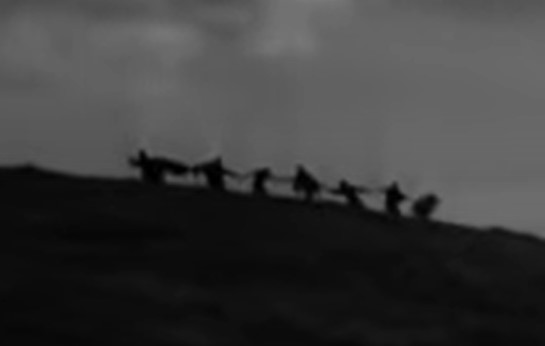
E) SUBLIME EVOCATIONS: Concepts that do the same sort of thing, but aren’t directly tied to a particular image or description
Such as Clive Barker’s whole concept of an afterlife built around aesthetic transgression in “The Hellbound Heart”/Hellraiser I & II.
It strikes me that what the Hellraiser series – meaning the novella and the first two movies, where Barker still played some role and they weren’t just using repurposed scripts – is getting at, is a horror-fied take on what was discussed in certain quarters of French philosophy as the “limit-experience.” An experience of sensation that blows all your gaskets and seems to hint at transcendence. German philosopher Schopenhauer observed that things like pleasure and happiness are impossible to maintain. If you had a pill that made you perfectly happy and took one every day, you’d eventually adjust to it and get bored and want a super-happy pill to cut through the first happy pill. A story like Hellraiser, I think, presents a vision of busting through that limit and being able to up the ante on sensation indefinitely. Happy pills all the way up until you’re walking around with nails in your face and ripping people up with chains. And so I think the conceptual beauty Barker is aiming for is the boundlessness of it. The idea that you could have a kind of pleasure so outside the bounds of what is human that it would exceed mere transgression and scan as unending, unchecked horror. There are of course other readings of what he was going for and where he was coming from with this concept of Hell, which may be valid, but regardless I think there’s a sort of beautiful anti-beauty to it. Frank in the movie, and the doctor guy in the second one, both see first hand the disparity between “beauty” in the conventional sense and a beauty that elides the distinction between pleasure and suffering. They think they’re freaky but get in over their heads. It’s interesting, too, that Stuart Gordon – who I think of as being very much a philosophical filmmaker – released From Beyond around the same time, a splattery and grotesque Lovecraft adaptation which deals with similar themes.
F) CONTRASTING IMAGERY: Then we have beautiful things in horror… that aren’t directly related to the horrific element
For instance, beautiful or serene scenes, or beautiful sentiments, that follow or precede horrible things to strengthen the impact of both.
This is a technique you find all over the place in horror movies (and literature, too) – but the place I remember it being pointed out, in particular, was in a film commentary track by Tim Lucas on a Mario Bava movie, I think Blood & Black Lace. I think it probably does occur more frequently in Italian giallo (proto-slasher) films as well as the wave of gore films that came after them, as those directors were very focused on technique, even if the storytelling was sometimes convoluted or incoherent. But watch any one of those movies and if you look for it, you’ll notice a serene nature scene after a grisly murder somewhere.
And finally, I think uniqueness and the extent to which an image, description, or scene “sticks out” may also play a role. Though I think I’m getting into more territory that’s difficult to define. Is anything really “unique”? Do we remember things that are beautiful or are things beautiful because we remember them? I haven’t read much about it but memory, like consciousness itself, is probably one of those things that our minds just sort of do and it’s not abundantly obvious what it’s there for.
I think in some sense all the scenes, images, and descriptions I’ve mentioned so far have an element of this. It gets us back into undefinable territory sort of – what makes something “memorable?” What makes it “unique?” How “unique” can anything really be? A couple more scenes come to mind immediately, though, when thinking about this. In a Euro-horror flick from the ‘70s called Alucarda done by a director who I believe was Jodorowsky-adjacent named Juan Lopez Moctezuma, there is a scene with a woman in a coffin filled with blood.
Beauty is all over the place in horror if you think about it – but then of course there is still plenty of stuff to be found in horror, across sub-genres, that is not at all beautiful and does not aspire to beauty, and is merely horrific or shocking or repulsive. That’s probably the larger part of what happens in the genre, and that’s fine – I love it all. “It’s a nugget if you dug it,” as they say.
Do you find beauty in your weird fiction? Dissect an example.
Sure! Though I think the reader has the final say on if there’s something beautiful in there or not, I do try to create aesthetically resonant, memorable images, and I hope some of them come out as beautiful. People have pointed out that I like “big” endings to my stories, which I think is probably true in some sense of all the stories I have had published so far. Even my small endings could probably be characterized as big. It just seems natural to me that you’re going to want a horror (or dark science fiction) story to go out in a big way that finishes things out effectively in terms of the narrative but also leaves the reader with an arresting image to think about. This is not to say I end every story with a world-ending (or world-altering) thunderclap. I have finished a few stories that way however, including the one in this first example.
The first one that comes to mind is the ending of “Birth,” my story which appeared in Weirdbook Magazine #44. I think there are actually a few aesthetically striking scenes in that story. I think it gets sort of intense at points, but that’s not to say that I think the story is salacious or excessive. I actually had planned to go further with some of the imagery – more descriptively and fully fleshing out particular rituals where things are only hinted at in the published story. I decided that bringing some of the visceral, psychosexual stuff into “extreme” territory would make it too much about that and I would lose the point of the story and make it more about how far I could push it.
But as to the particular image that comes to mind, at the end of Birth there is a scene in which an angelic figure, having been delivered into existence through a rather bizarre and explosive form of transubstantiation, meets the person responsible for bringing her into being. She utters a single word in Biblical Hebrew, and the choice I made to go with that is a whole story in and of itself. The character who encounters her is, himself, so overwhelmed by her presence and its beauty, and the reality-flexing shriek she lets out, that his body and mind can’t handle it. He is biologically unequipped to absorb the aesthetic experience of encountering a being this beautiful. He melts down physiologically. Blood starts pouring out of his eyeballs. I think we’ve all been there once or twice, right? Maybe I’m just a bit of a romantic. The creature cradles him with a motherly gesture. The character, his mind burned to a cinder, responds with an infantile reflex. The reader is left with what I think of as an image that feels a bit esoteric and transcendent.
I also find a kind of beauty in narrative symmetry. In my cosmic horror-comedy Gus, for instance, which is in the clown-themed horror/noir anthology Funny As A Heart Attack, it begins with an image of a bustling, joyful, carnivalesque sort of atmosphere. Lots of happy things all going on at once. The story’s final scene starts with a scene in the same place, only after the world has spiraled into chaos. The same types of images you see as happy, innocent ones at the beginning are perverted into over-the-top cruel ones at the beginning of the third act. In a story that I think is, among other things, about idealization and romanticization and decay. I think there is a kind of beauty in those types of layers. There’s a lot of other stuff like that in the story as well; Easter eggs where occurrences or images or references match up at different points in the story, some more obvious and some less so. Though as I dig deeper into this one I start to wonder if I am discussing aesthetics or just “craft.” But I do hope that if people notice that stuff they get a kick out of it.
What scares you? Is it beautiful?
There is a whole universe of things to be afraid of out there and I have worried about all of them at least once. When I was a kid I was so anxious I used to worry about things like leprosy, even though by the time I was born leprosy was easily curable and (in the developed world) could only be contracted through intimate contact with an armadillo. Some of my fears might have beautiful elements to them but the absence of beauty figures into a lot of my fears.
Does any formal training or experience motivate your writing?
Not directly but I think possibly. There was a time a few years ago when I was writing a tremendous amount of other stuff on a very rigorous schedule. In particular, stuff for which it was important to be conscious of word count. I suspect that a couple of years of that did translate into my having more control of how I write fiction on the nuts and bolts level. There are some other explanations I sometimes point to as possibilities for why I have been able to write stories much more regularly, more clearly, and without the same degree of crushing agony over the past few years than in the previous decade or two. But I suspect at least part of it comes from thinking about writing as a way of organizing information, within the context of a word count, to meet the expectations of an audience. All the artistic, conceptual, imaginative, bizarre and – since we’re talking about beauty — beautiful stuff is still absolutely integral, but that stuff can only really come to fruition within an organized framework. Otherwise, you’re just sitting there waiting for a story to put itself together for you.
Any current or future endeavor can we pitch?
I’ve got a story slated to appear in Lovecraftiana: The Magazine of Eldritch Horror at the beginning of 2023 about which I am very excited — I think it’s sort of a lumbering beast of a story. I heard Gavin Chappel say in an interview that his favorite stuff from Lovecraft was the dream cycle stuff and that he digs the weird far-out Moorcock stuff. The Dancers at the End of Time is one of my favorite series, so I went into it with that mindset — sending him something that would have characteristics of his favorite type of weird fiction, but doing very much my take on it. So it’s very narrative/character-driven but it gets bonkers. I’m looking forward to seeing that one in print. And I’m always working on stuff, but I am too superstitious to talk about what I’m working on.
Interview List Regarding #Weird Beauty on Black Gate
- Darrel Schweitzer THE BEAUTY IN HORROR AND SADNESS: AN INTERVIEW WITH DARRELL SCHWEITZER 2018
- Sebastian Jones THE BEAUTY IN LIFE AND DEATH: AN INTERVIEW WITH SEBASTIAN JONES 2018
- Charles Gramlich THE BEAUTIFUL AND THE REPELLENT: AN INTERVIEW WITH CHARLES A. GRAMLICH 2019
- Anna Smith Spark DISGUST AND DESIRE: AN INTERVIEW WITH ANNA SMITH SPARK 2019
- Carol Berg ACCESSIBLE DARK FANTASY: AN INTERVIEW WITH CAROL BERG 2019
- Byron Leavitt GOD, DARKNESS, & WONDER: AN INTERVIEW WITH BYRON LEAVITT 2021
- Philip Emery THE AESTHETICS OF SWORD & SORCERY: AN INTERVIEW WITH PHILIP EMERY 2021
- C. Dean Andersson DEAN ANDERSSON TRIBUTE INTERVIEW AND TOUR GUIDE OF HEL: BLOODSONG AND FREEDOM! (2021 repost of 2014)
- Jason Ray Carney SUBLIME, CRUEL BEAUTY: AN INTERVIEW WITH JASON RAY CARNEY (2021)
- Stephen Leigh IMMORTAL MUSE BY STEPHEN LEIGH: REVIEW, INTERVIEW, AND PRELUDE TO A SECRET CHAPTER (2021)
- John C. Hocking BEAUTIFUL PLAGUES: AN INTERVIEW WITH JOHN C. HOCKING (2022)
- interviews prior 2018 (i.e., with John R. Fultz, Janet E. Morris, Richard Lee Byers, Aliya Whitely …and many more) are on S.E. Lindberg’s website
S.E. Lindberg is a Managing Editor at Black Gate, regularly reviewing books and interviewing authors on the topic of “Beauty & Art in Weird-Fantasy Fiction.” He is also the lead moderator of the Goodreads Sword & Sorcery Group and an intern for Tales from the Magician’s Skull magazine. As for crafting stories, he has contributed five entries across Perseid Press’s Heroes in Hell and Heroika series and has an entry in Weirdbook Annual #3: Zombies. He independently publishes novels under the banner Dyscrasia Fiction; short stories of Dyscrasia Fiction have appeared in Whetstone and Swords & Sorcery online magazines.
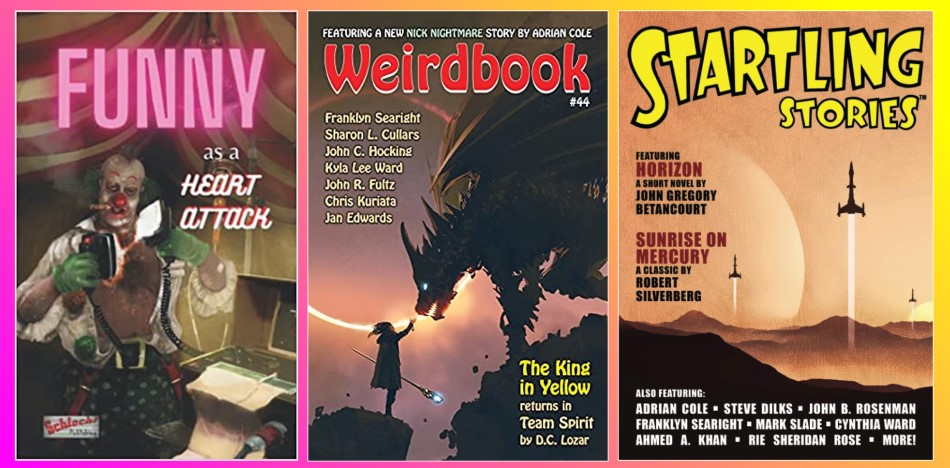
[…] It was a super fun question to kick around, and on top of digging into a bunch of my beautifully horrific favorites and trying to figure out what makes them tick, I also got a chance to go in-depth discussing one of the images in my story “Birth” which appears in Weirdbook #44. I hope the resulting interview makes for a fun read — check it out here! […]
I enjoyed this too. More of a discussion than a direct interview. I hope it inspires others to consider the boundary between attraction & repulsion in fiction.